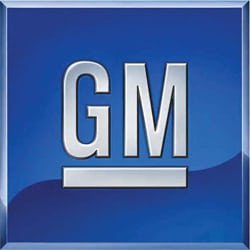What The New GM Deal Means To Sirius XM
 It did not get a lot of fanfare in analyst reports, nor did it seem to be a huge topic of discussion, but the new GM deal means a lot to Sirius XM Radio. To fully grasp this, we need to go back in time to when the GM deal was first struck.
It did not get a lot of fanfare in analyst reports, nor did it seem to be a huge topic of discussion, but the new GM deal means a lot to Sirius XM Radio. To fully grasp this, we need to go back in time to when the GM deal was first struck.
When XM Satellite Radio reached a deal with General Motors, it was a big win for satellite radio in terms of “getting onto the map”. It was the GM deal that paved the way for other OEM’s to follow suit. In many ways, the success of satellite radio happened because of that deal. That being said, it turned out to be a quite expensive deal for XM satellite radio, and now the merged Sirius XM.
At that time, XM Satellite Radio was not 100% commercial free music. The price of a subscription was also less expensive at $10 per month vs. Sirius’ $13 for commercial free music. XM’s business plan called for subscription revenue PLUS ad revenue. The thought was that the ad revenue would bolster the money brought in in a substantial way. What XM promised GM was that they would get a percentage of the SUBSCRIPTION revenue (capped and based on the $10 subscription rate) that would eventually get to 50%. This is not a real problem for XM if they were getting an additional $3 or $4 dollars in ad revenue. It became a huge problem because that type of ad revenue never came to fruition. Eventually XM abandoned the ad supported music business model, raised prices, and went commercial free on music.
What happened with the GM deal was that it was basically a break even proposition at best. GM added plenty of subscribers, but only half were keeping the service. Thus, sub numbers looked great, but realistically nothing that came from GM was trickling down to the bottom line.
This is why hearing that a new GM deal exists with better financial metrics for Sirius XM is a huge plus. Without having seen the deal, all we can really surmise is that the subsidies are better, and the revenue share is more friendly to satellite radio. What this means is that GM subs will finally help more than just the subscriber number. It also means that Sirius XM has more negotiating power with other OEM partners to improve on those deals as well. We can also surmise that because this is a long term deal (through 2020) that Sirius XM was happy with the terms of the deal. One special item of not is that the old deal was tied to the radio. Thus, even when the car sold, and a new person activated the radio, GM would STILL get their revenue share on that radio. Whether this changed in the new deal is unknown, but it is important to bear this fact in mind.
As we are all aware, the OEM channel is important to Sirius XM Radio. It is the mechanism by which the most people get exposed to satellite radio. The company announcing a change in their biggest OEM partner is huge news that can not be underestimated. It is perhaps one reason why, despite lower car sales, that Sirius XM was able to raise their guidance for adjusted EBITDA from $300 million to $350 million for 2009.
As with most OEM deal, we will not get to see all of the details. However, we will be able to measure the impact through certain metrics such as revenue from subs in promotional periods, etc. The cost savings in the GM deal was not the only piece of information offered up by Sirius XM. They also indicated savings in the talent that appears on their service. We will be able to see that impact going forward in the programming cost metrics.
Investors should bear in mind that this will all take time to pan out. The bottom line is that it now seems possible that GM can contribute to the BOTTOM line rather than just the subscriber roles.
Position – Long Sirius XM Radio, No position GM





A. With the merger completed why can’t SIRIXM give more details about each OEM deal?
B. If the old deal was so great for GM why would GM enter into a new deal that is more SIRIXM friendly????
A. They can not give details because the other OEM’s would then know the deals. There are two parties in the deals. The OEM’s can be even more secretive than SDARS.
B. The GM deal was setting to expire. There is no longer an “exclusive” aspect. While GM would have loved to have the deal the same, there was no way it could. GM had some leverage, but not as much as before
The real question is 100 percent penetration on installs.
I really wish that siriusXm would get to this point with Gm and also ford. EVERY new car leaving the plant should have satrad. Period. Weither or not they are activated right away or not it would still leave siriusXm the option to do something with those radios in the future.
I really like the ground work mel is laying for this company. Its going to take a while to see the end result and for share holders its going to be a little painful for a while too but you cant ignore he has a plan in place and its starting to show.
I can`t take much more pain from this stock after 4yrs.
I remain concerned that Mel is just a cost guy. They need to grow and need a commercial executive to work with Mel.
Pal, the pain we’re getting now is nothing like the pain before (merger, near bky on 11th hour); this is easy street now compared to then.
100% penetriation is dangerous. remeber, each install costs money for Sirius XM
Actually, I don’t think we will see 100% penetration any time soon. During the CC, it was disclosed that they will lower penetration in certain models that have a very low conversion to a self-paying sub. As explained during the CC, it only makes economic sense to do so, but its disappointing nonetheless. I would prefer that sat. radios just become standard like the CD player, but that isn’t going to happen anytime soon apparently.
In Bankruptsy , like GM will for sure file, This new aggreement is NULL and VOID, as all of GM’s contracts.
I’m still hoping for some news and details of going w/ an option of free commercial based format for all the idle radios. I realize the commercial format that XM started with had failed, but w/ over 10-15 million idle Sat radios & counting I think it’s time to re-think this idea. When this economy recovers Sirius Xm should be geared up for this concept. It brings more to the table than whats on the surface.It also would attract more people to Sat radio which could raise advertising income, but also get their foot in the door (or in the ears) to entice people to move up to a non-commercial sub plans(plan could consist of a limited number of existing channels w/ ads injected and enticements to be a sub by giving these listeners a free taste of com. free format that is FCC safe,every so often). I don’t believe this would be looked at by Wall Street as a weakness but as a potential boon for Sat radio. It’s a way of marketing Sat radio while also adding to the cash flow. Like a line from The Godfather “just enough to wet their beak”!
One other point then I’ll shut up.If the consumer embraced the commercial free format that would also give Sirius Xm more leverage w/ the auto makers because of more demands from these customers that want a car w/ Sat Radio. If the demand was big enough it could turn the tables on the auto makers to share the cost of installation etc.
I agree 100 percent could be dangerous but it could also allow for somethings to happen on down the road. like someone said before satradio should be like the cd player or something. It should be everywhere.
The fact of the matter is the technology is good and if it was free im positive am/fm wouldnt stand a chance but alot of people just wont pay for radio because they are used to it being free. SiriusXm, once they break even and start making money can do alot of things with these unused radios.. Another thing i wish is that apple would design the radios for siriusxm.. That would drive some apple fanboys to buy into satrad.
This contract is big news for Sirius. I just wonder why it wasn’t released to the public before the conference call where it got overshadowed by the sub loss… and the sure sub loss coming in the second quarter as well, that they insisted on telling us about. Why didn’t we hear about the contract before? That kind of ticks me off.